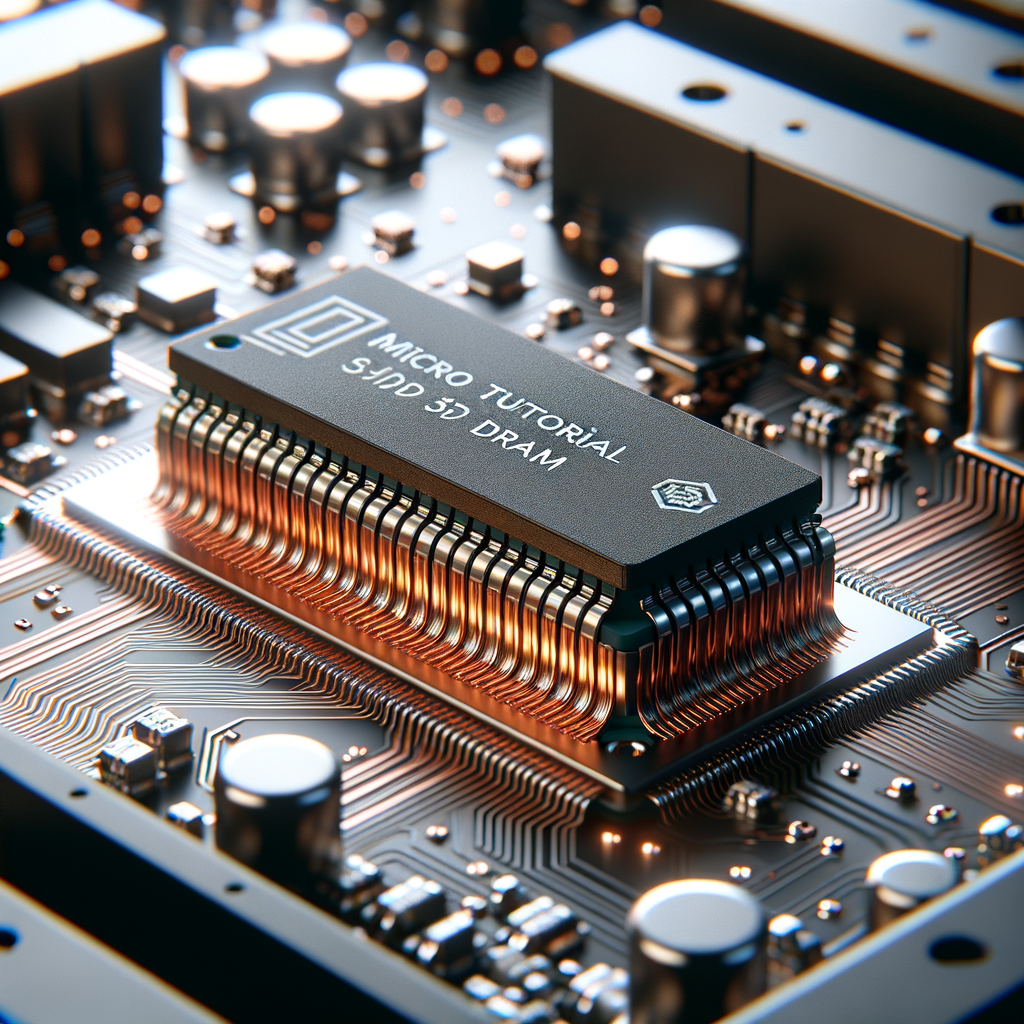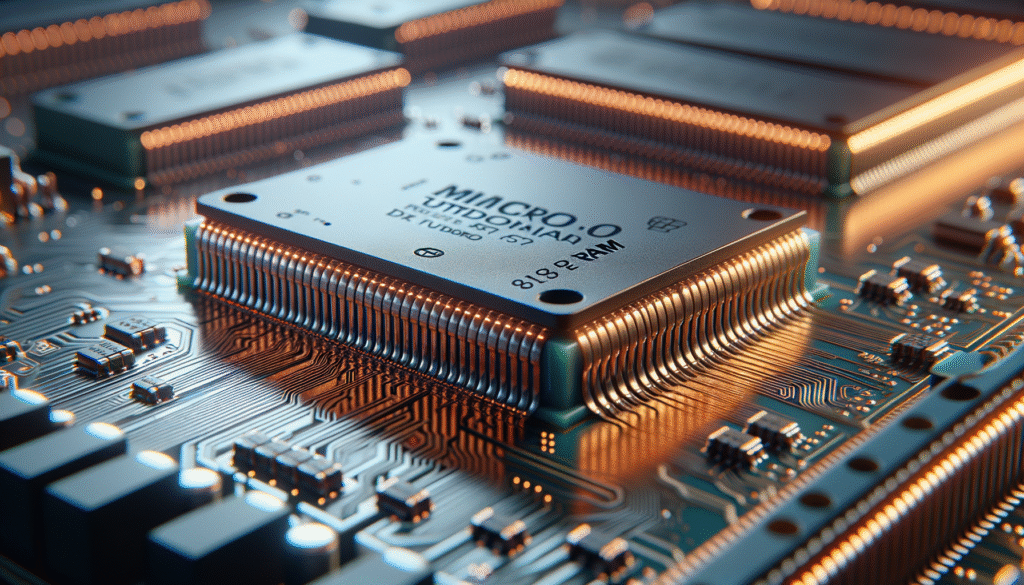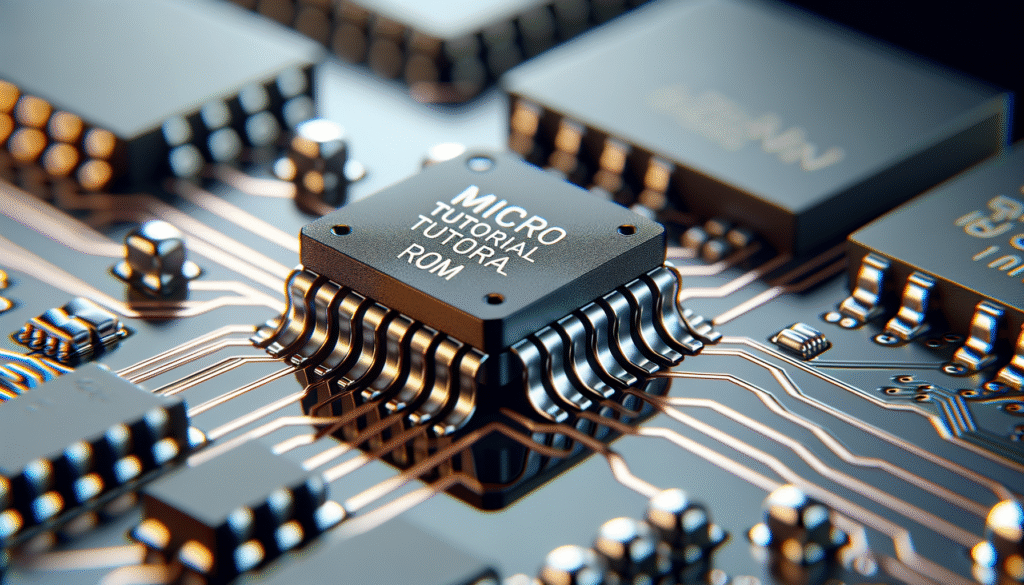Practical Introduction
Have you ever wondered why your computer can run multiple applications at the same time? Much of this capability is due to DRAM, which is essential for a system’s performance. I remember when I built my first computer; the difference when I added more DRAM was remarkable.
What it’s Used For and How it Works
DRAM, or ‘Dynamic Random Access Memory’, is a type of volatile memory commonly used in computers and electronic devices. Unlike SRAM (Static RAM), DRAM stores each bit of data in a capacitor and a transistor, making it more compact and generally more cost-effective. However, because capacitors discharge, DRAM needs to be refreshed periodically to maintain data.
This refreshing process means that each memory cell must be read and rewritten, which presents a speed challenge but also allows DRAM to store a greater amount of information in a smaller space. Generally, DRAM is used for the main memory in computers, servers, and mobile devices due to its ability to efficiently handle large volumes of data.
In terms of performance, DRAM is slower than SRAM, but its density makes it the preferred choice for Random Access Memory. In practice, DRAM allows your devices to function smoothly as it provides the necessary space for multiple applications and tasks to run simultaneously without compromising processing speed.
Key Parameters
| Parameter | Typical DRAM | Typical SRAM |
|---|---|---|
| Speed | 1600-3200 MT/s | 20-300 MT/s |
| Capacity | 4GB – 64GB | 1MB – 16MB |
| Power Consumption | Low | High |
| Cost | Low | High |
| Access Time | 50-70 ns | 10 ns |
Thus, DRAM is an ideal option for applications requiring high storage and low cost, though this comes at the expense of speed compared to other memory types.
Specific Use Case
A specific use case for DRAM can be observed in laptops. Imagine you are giving a presentation on your laptop while also having several tabs open in your browser and a photo editing program running. This is where DRAM truly shows its value. It provides the necessary space for the CPU to quickly access data from all those applications running simultaneously.
DRAM not only allows these applications to function at the same time but also ensures that the overall performance of the computer remains optimal. You can switch between tasks seamlessly without experiencing significant slowdowns. In laptop design, engineers must balance the amount of DRAM with other components to maximize system efficiency. Therefore, choosing the right DRAM, in terms of capacity and speed, is crucial for providing a smooth user experience.
Common Mistakes and How to Avoid Them
- Not having enough DRAM: Ensure your system has enough capacity for your needs.
- Mixing different types of DRAM: Use modules of the same type and speed to avoid conflicts.
- Ignoring refresh: While it’s automatic, ensure your system handles it correctly.
- Not considering overclocking: If you decide to increase speed, do so carefully to avoid damage.
- Disregarding compatibility: Always check the DRAM compatibility with your motherboard.
Conclusion + Call to Action
In summary, DRAM is an essential component in most modern electronic devices. It provides the flexibility and capacity needed to run multiple applications at once, enhancing efficiency and performance. Whether you’re involved in electronics or simply an enthusiast, understanding how DRAM works can help you optimize your systems. Don’t hesitate to delve deeper into this fascinating component and how you can apply it in your projects.
More information at electronicsengineering.blog
Quick Quiz
Question 1: What does DRAM stand for?
Question 2: Why does DRAM need to be refreshed periodically?
Question 3: Which type of memory is generally slower?
Question 4: What is a typical capacity range for DRAM?
External sources
- Tutorial: MicroBlaze con DDR3 SDRAM
- MICRO 2024: Tutorial sobre Memoria Centrada en el Procesamiento
- Cómo funciona la memoria DRAM



